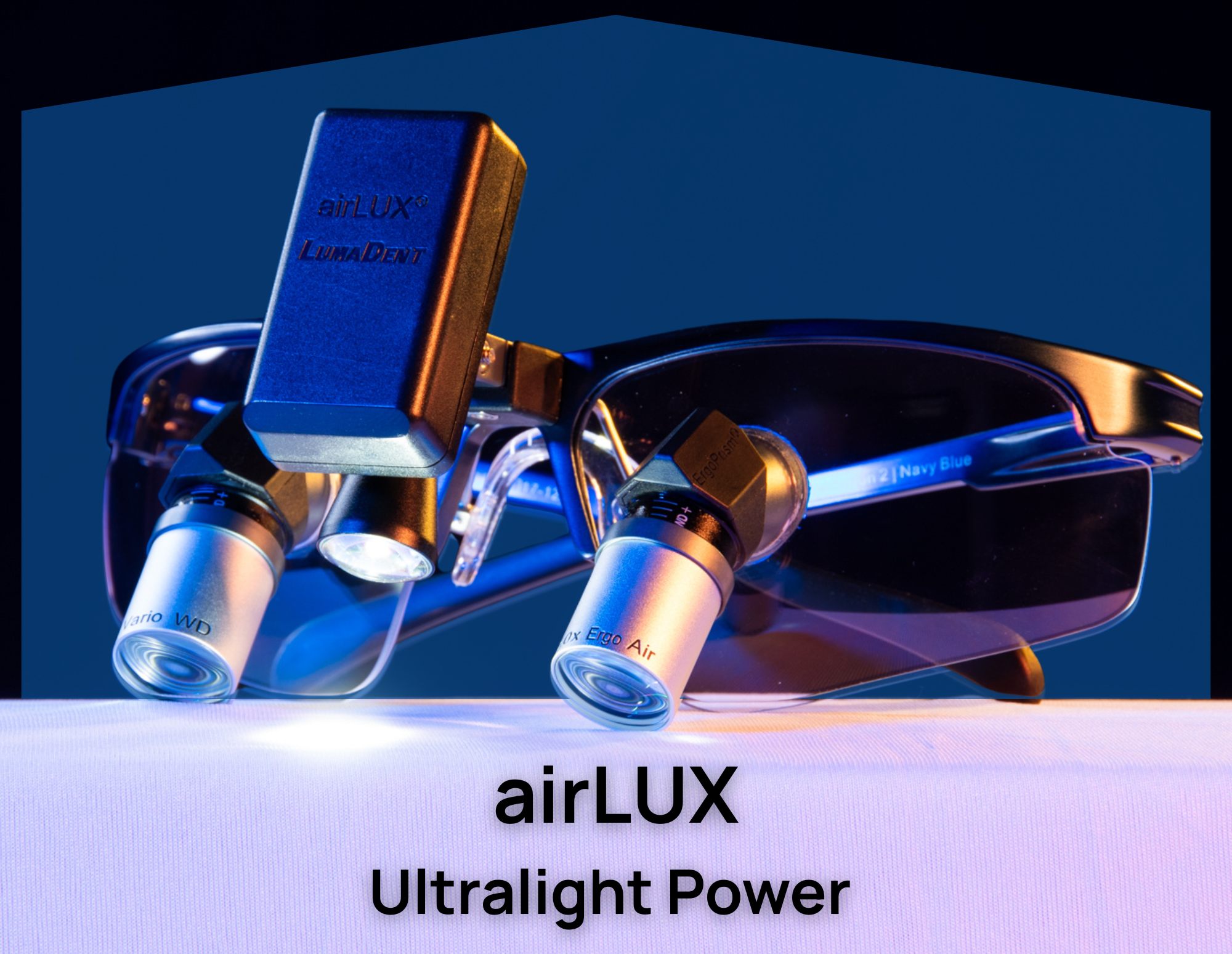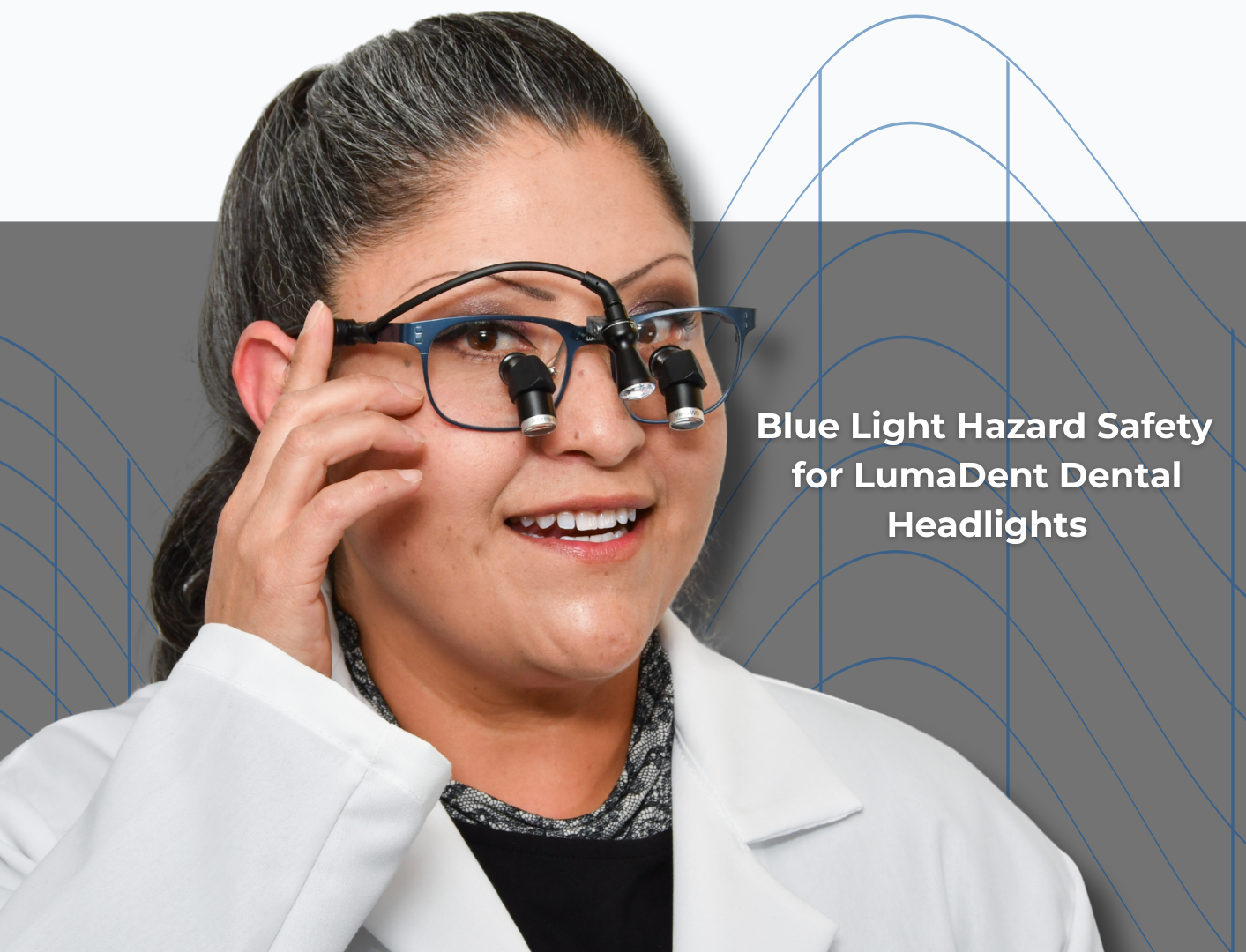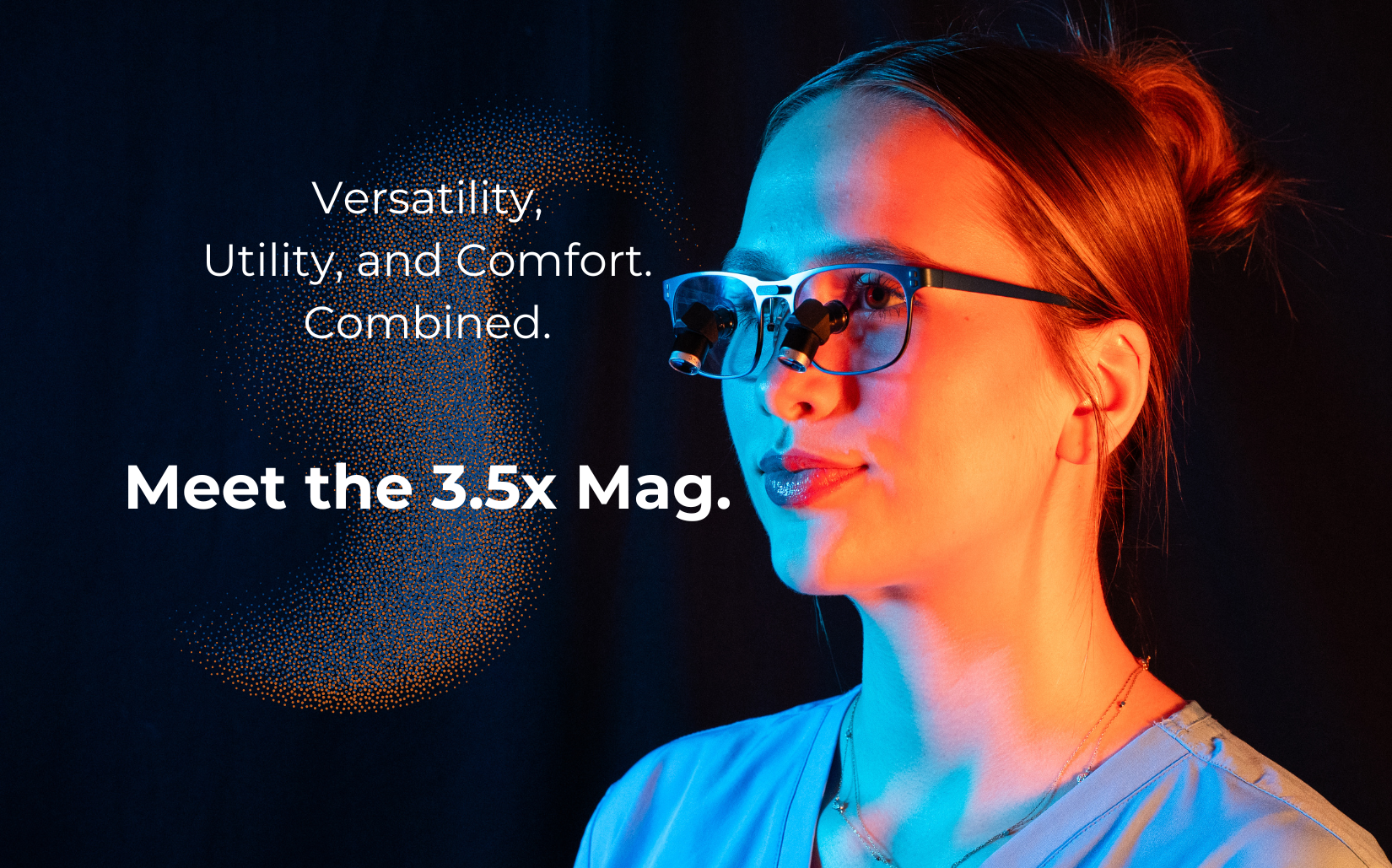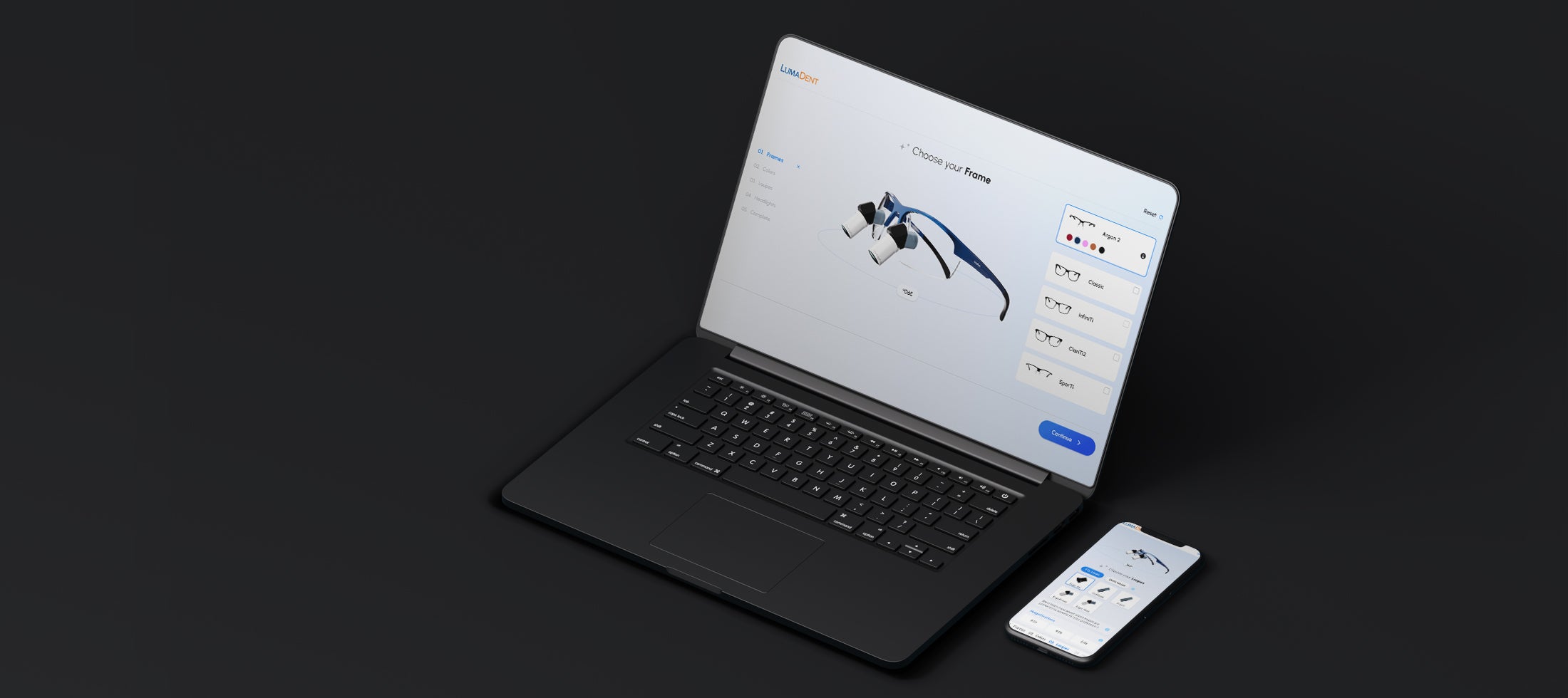Imagine marrying the benefits of magnification with zero forward head tilt. That's the benefit of the most impactful ergonomic tools dental clinicians use: loupes and lights.
Katrina Klein, RDH, CEAS, CPT
It’s all about the angles, and I’m not referring to the perfect selfie; I’m talking about safety. I’m talking about the 64% to 93% of dental clinicians who report being in pain from working in clinical hygiene.1 I’m talking about how we work and the tools we use to help us safely see into the spaces where we work. I’m talking about the most impactful ergonomic tools dental clinicians use: loupes and lights
We can’t live without illumination. The alternative is the old overhead light that we used to spend hours repeatedly adjusting and dodging to avoid blocking its dim yellow beam. I once observed 37 adjustments in one hour during an ergonomic assessment! That’s a massive waste of time and a musculoskeletal disorder in the making. The last thing we can afford is to waste time.
Magnification is considered a top contributor to posture correction for dental clinicians, but it goes further than that. The technology reduces the number one cause of dental pain for chairside clinicians: forward head posture that results in neck flexion.3 Imagine marrying the benefits of magnification with zero forward head tilt, as seen in the photo, where I’m using ErgoPrism Loupes and the uniLUX light system, both by LumaDent.
What we know is that our workspace (the mouth) is in an awkward position relative to our body. According to the Occupational Safety and Health Administration (OSHA), awkward positioning is one of the major risk factors for workplace injury. There is simply no safe way to see into that three-inch hole in the face without assistance and a strategy.4 Thankfully, loupes and lights are now considered standard in hygiene school. We know that as recently as 2020, up to 97% of us were still reporting pain.5 How can this be? This is where the lyrics from the children’s song “Dry Bones” should come to mind—“The knee bone’s connected to the thigh bone”—because it’s all connected.
Every part of our body is connected, from the feet to the head. When we lunge our head forward, we use muscles from our neck all the way down to our feet to fight imbalance. This begins with engaging the scalene muscles and upper trapezius muscles, then the spinal erectors transfer to the psoas muscles, quads, calves, and then our feet and toes in order to maintain balance. Every movement requires a countermovement in the body, which is always trying to maintain symmetry and homeostasis via neutral posture.
What the posture requires
The mechanics of neutral posture for the head requires the eyes to look parallel to the floor and the ears be directly over the shoulders with zero forward head posture, just as we do when we’re engaging in a conversation out of the operatory. To date, the acceptable amount of forward head posture has been >20°. This has been hard for most clinicians to obtain due to not using other ergonomic strategies, such as proper operator sitting, patient positioning, indirect vision, and having the muscular integrity to maintain neutral posture.
Manufacturers have done a good job of designing through-the-lens (TTL) and flip-down/-up versions of loupes in varying declination angles as steep at 45° to help decrease the amount of forward head flexion during practice. The result is that the steeper the declination angle, the greater the eye strain becomes. It’s been a matter of pick your poison.
Degrees out of neutral on the cervical spine (aka neck) equate to pounds of pressure. Every 10° is about 10 pounds of disk pressure on the neck. Even if we stay in that safety zone of up to 20°, we still practice with a 20-pound bowling ball hung on the front of our necks for hours at a time, day after day. The most common workplace injury for dental clinicians is chronic musculoskeletal disorders (MSDs).6 It’s no surprise that even 20 pounds of cervical spine pressure for eight-plus hours a day, 204 days a year average, isn’t exactly the safest option.
The joy of prism loupes
For loupes, the solution has seemed impossible. How do you look straight out and straight down at the same time in a clinical setting without a microscope? The solution is prism loupes. These reduce the cervical angle from 20° of forward head flexion to 0° and have been proven to reduce neck flexion, which is where imbalances often begin for dental clinicians.
There are a few manufacturers that offer different features, but the technology works the same. It mimics what a microscope does, only the microscope is on the front of the clinician’s face. Prism loupes have several set magnification levels like traditional TTL loupes, and the ErgoPrism loupes have an added feature of an extra fine adjustment on the oculars themselves. This is for those patients with more shallow or deep heads so that operators can set their working distance to their exact comfort. The technology is simple, in theory. It’s all about the angles of the reflections in the prism placed before the ocular. Rather than a mirror image, where the reflection is backward, the image is flipped so that we can see things as they are.
How are these just now becoming a hit in the dental profession when the technology has been around for a while? The biggest hurdle is that we can’t ergonomically cheat as much with these on our face like we can with regular loupes. This means minimal trunk twisting or forward head posture. This is a major plus because the magnification forces the clinician to keep proper working distance and the prism mechanics force the use of ergonomic strategies by keeping the head in a neutral position. The more we learn to lean patients back, move patient heads around, and use indirect vision, the less fatigue and injury we experience.
As natural givers, we struggle with asking patients to lie back and move where we need them. But doing so is to their benefit also so that we can provide the best care. There’s room for those patients who legitimately cannot lean back, but using indirect vision is a far safer option to treat patients than trunk twisting and chicken winging.
Many of us admit we need help with ergonomic solutions in our awkward workspace situations. If we want to maintain the angles of neutral posture, we need to use as many means as we can. We need the physical strength necessary to maintain neutral posture, frequent muscle release, customized operatory setup, and equipment that truly keeps us in the best neutral posture. As for equipment, prism loupes have taken safety to an entirely new level.
https://www.rdhmag.com/sponsored/article/14280536/ergoprism-loupes-a-slam-dunk-for-safety




Share:
Ergonomically Optimal Loupes Support Proper Practice Posture
Chairside Impact: Sitting Pretty with ErgoPrism Loupes by LumaDent